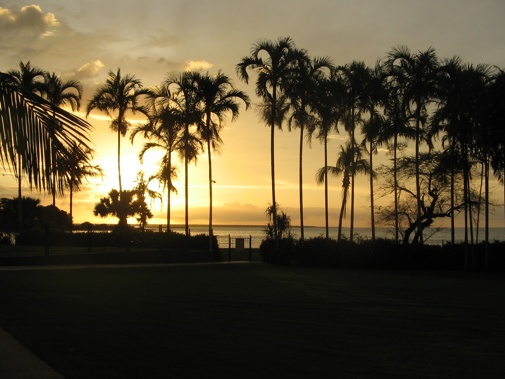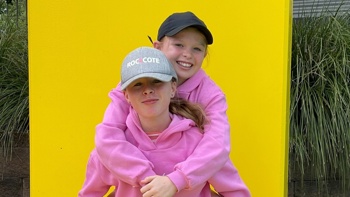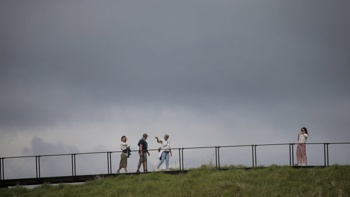
Purring along the Stuart Highway bound for Darwin, after pulling out from Katherine my AAT Kings’ guided holiday called into the charming town of Adelaide River. It’s the only notable stop on the 300km drive. Don’t let the name deceive you – the river does indeed run here, but it’s about 3000km from Adelaide city. This pint-sized town is historically compelling, because of the astonishing role it played during World War II in the defence of Australia.
The town had been designated a rest area for personnel serving in Darwin in 1939, but the Japanese air-raids on Darwin led to the mass-exodus of tens of thousands of Australian and American troops to Adelaide River. A huge amount of military infrastructure subsequently sprung up in this sleepy town, transforming it into a critical military centre, complete with military airport and general hospitals. The last Japanese air-raid in the Northern Territory bombed Adelaide River.
The Adelaide River War Cemetery was established in 1942 following the Bombing of Darwin and is now managed by the Commonwealth War Graves Commission. Over 400 identified servicemen, killed in action, are buried here, while a memorial honours the many who served in the area, but whose remains were never found. Nestled on the banks of the Adelaide River, its lush green lawns and floral garden beds are impeccably maintained, making it one of the loveliest cemeteries I’ve ever visited. Information panels and video displays showcase the extraordinary contribution Adelaide River made in wartime.
After taking in such sobering historical insights, we all needed a beer, and you could not wish for a more quintessential old-school country pub than the Adelaide River Inn. Flanked by a lush, leafy and lawned beer garden this rustic country pub was first built in 1874. Now sporting comprehensive accommodation facilities, the pub proper pays tribute to the town’s recent history. The ‘303 BAR' takes its name from the 303 rifle, which was the weapon of choice for the Australian Army in WW2.
Adjoining it is the Diggers Bistro, but the 303 Bar is where you’ll want to be. Its walls are festooned with historic photos and memorabilia, but the starring exhibit is the stuffed buffalo – possibly the most famous buffalo in the world. Standing on top of the end of the bar, Charlie is the buffalo that featured in Crocodile Dundee. Remember the scene where Mick Dundee hypnotizes the buffalo to the ground? Well, this was him. “Charlie” was an Adelaide River resident for decades, until he passed away, 17 years ago. He’s been standing on the bar, ever since. How very Australian.
Alighting from my AAT Kings’ coach, after an epic group journey across the Kimberley from Broome, Darwin’s laid-back country-town charm fast enraptured me. Unlike the big cities strung along the eastern seaboard, Australia’s northernmost city beats to a very distinct tempo. Home to 110,000 residents, this is a city of swaying palms, sunset markets and open-neck shirts. Despite its striking cosmopolitan make-up, Darwin retains a frontier atmosphere and revels in its remoteness. (Jakarta is decidedly closer than Sydney.)
For most travellers, Darwin is merely a transit point, a start or end point to a great adventure. But this Top End town will more than reward you, if you layover for a few nights. If there is one quality that exemplifies Darwin’s personality, it is resilience. In 1942, nearly 200 Japanese aircraft bombed the harbour, attacking the city 64 times. More bombs were dropped on Darwin by the Japanese than Pearl Harbour. The legacy is the easy-to-explore gun embattlements and underground tunnels that speckle the city.
Tunnel 5 is open to the public and is now furnished with a sobering gallery of historical photographs depicting Darwin life during the war years. But a far greater nightmare was to rein down on Darwin. On Christmas Eve 1974, Cyclone Tracy ripped through town, destroying 95% of dwellings and killing 65 people. Remarkably, within four years the city was largely rebuilt. The Northern Territory Art Gallery & Museum features a spectacularly vivid cyclone exhibition, including a haunting audio recording of the violence of Tracy as it decapitated Darwin.
The banner visitor attraction also boasts a stirring Aboriginal art collection, packed with insights. As an example, did you know indigenous people never call didgeridoos, didgeridoos? No, I didn’t either. Every tribe has a unique name for the instruments. The cheerfully painted main thoroughfare of Mitchell St is laden with tourist services and hospitality outlets, ranging from fine dining to unfussy food. I ventured north on foot to take in the leafy historic precinct which is veiled in monsoon forest.
Some of the top sights include the old Town Hall which was reduced to its foundations by Cyclone Tracy, as was the adjacent Christ Church, which the rebuild graphically portrays. Next up is the gloriously elegant old stone police station and the lush foliage of the Esplanade promenade, gracefully bracketing the photogenic Government House, built in 1877. Another stand-out is Old Admiralty House, a tropical-style structure that once housed North Australia’s naval commander and survived Cyclone Tracy.
The ever present sight of banyan, banana and palm trees are reminders of Darwin’s oh-so-tropical sense of place. Over 400 species of tropical plants are lustrously showcased in the splendid Botanic Gardens. November to April marks the rainy season, and the dry season of May to October marks the prime-time for a visit. Darwin is surrounded by verdant, broad-leaved parkland that hugs the sandstone cliffs around the harbour. The butter-coloured beaches are off-limits to swimmers during the rainy season, due to the twin presence of deadly killing-machines, box jellyfish and saltwater crocodiles.
Mindil Beach hosts fabulous sunset markets, but resist the temptation to dip your toes in the water until after May, when the dragonflies flutter in the air, joyfully signalling the end of the rainy season. The best place to relax and indulge, in the tropical Darwin breeze, is along the revitalised waterfront, flanked by swanky seafood eateries, boutique shops and sandy swimming lagoons.
Begin with a spectacular Cable Beach sunset then enter the rugged Kimberley to cruise down rich waterways teeming with wildlife on AAT Kings’ 11-day Wonders of the Kimberley guided holiday. Visit a remote Aboriginal community and tour through Argyle Diamond Mine. Experience the Ord Valley's gourmet produce at a unique private dinner and top off your trip in tropical Darwin. Departure dates from May to September. Priced from $6,375 per person twin share. Includes accommodation, transport, sightseeing, many meals and the services of an experienced Travel Director. Aatkings.com, 0800 456 100 or see your travel agent.
Take your Radio, Podcasts and Music with you









